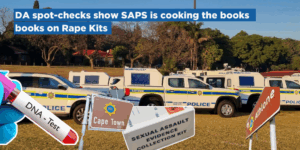The City’s first batch of neighbourhood safety officers is nearing deployment readiness in time for the festive season, but existing resources are already packing a punch, with nearly 500 arrests in the last quarter.
The City of Cape Town’s Gang and Drug Task Team (GDTT) has made 453 arrests in a cluster of crime hotspots over the quarter July to September 2017. The successes came from more than 300 autonomous and joint operations with the South African Police Service and other City enforcement agencies as well as general patrols in Athlone, Atlantis, Bishop Lavis, Delft, Elsies River, Grassy Park, Hanover Park, Kraaifontein, Manenberg, Mitchells Plain, Ocean View, Ravensmead and Steenberg.
One-third of the arrests were for motorists caught driving under the influence of alcohol. Officers also recorded nearly 3 000 traffic offences and 747 by-law offences. They confiscated 1 567 units of drugs, seven firearms, and 252 rounds of ammunition. In the last three weeks, officers have upped the ante by recovering 12 firearms – the latest being a .38 special revolver and 11 rounds of ammunition found in possession of a suspect in Manenberg yesterday, 21 October 2017.
‘These arrests and confiscations exclude the successes attributed to the South African Police Service (SAPS). However, given that SAPS handles the dissemination of their crime statistics differently, it’s not possible to give an accurate global view. What the statistics do show is that officers are in fact on the ground and making a difference, in spite of perceptions to the contrary. That said, we need more resources for all enforcement agencies but also greater parity between the arrest statistics and conviction statistics. Many of the successes we are able to report on come via community members and it’s disheartening for them to see perpetrators out on the street the very next day or week. So if we are going to bolster community confidence and make a meaningful impact in the fight against crime, then there needs to be greater emphasis on effective prosecutions,’ said the City’s Mayoral Committee Member for Safety and Security; and Social Services, Alderman JP Smith.
Below is a snapshot of arrests:
The GDTT focuses much of its efforts on the worst crime-affected areas in the city, with resources redeployed in line with risk assessments of the various flashpoints. In the quarter under review, Manenberg and Hanover Park accounted for 40% of the team’s interventions.
‘The decision on where to deploy and when is largely based on intelligence received from the SAPS as well as our own observations and intelligence derived from the ShotSpotter gunshot detection system. It’s not always ideal, because apart from the areas where ShotSpotter is deployed, we do not have accurate information about the threat levels. This is why the City proposed the implementation of neighbourhood safety teams that will provide a dedicated enforcement presence in troublesome areas. This whole-of-society approach to fighting crime is in line with our Organisational Development and Transformation Plan. The first 120 neighbourhood safety team officers are set for deployment by the end of November in Delft and we are excited to see what impact this approach will have on crime and policing thereof,’ added Alderman Smith.






